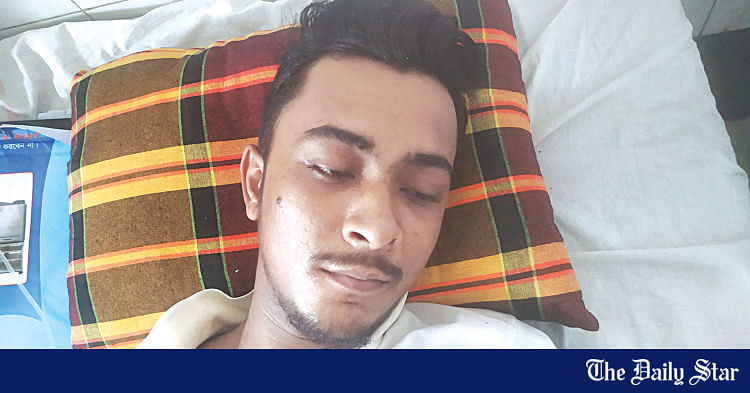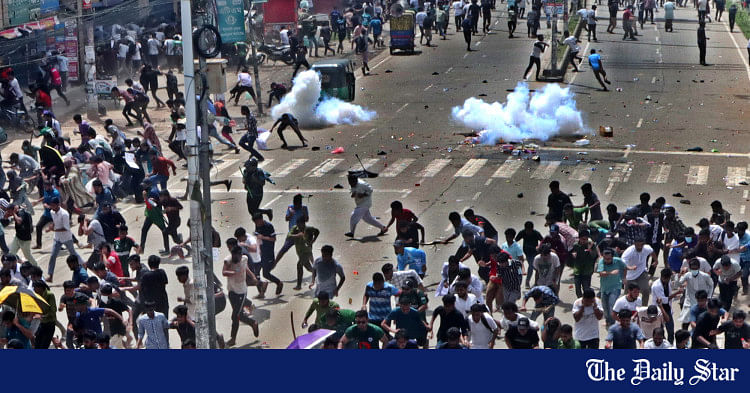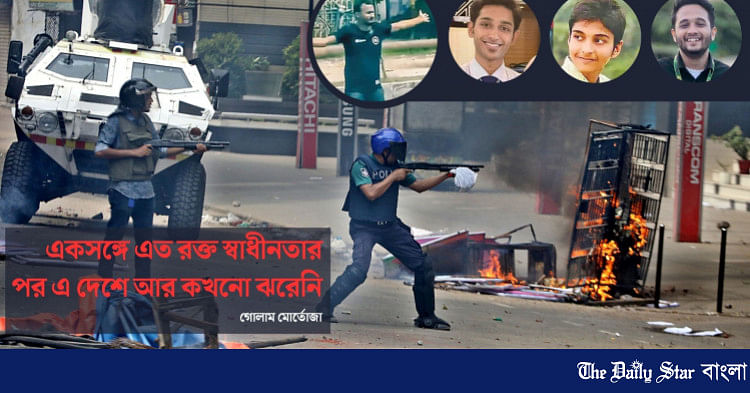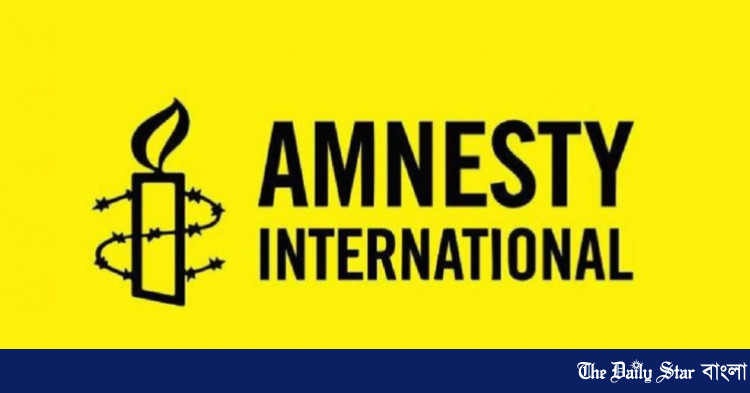Saif
Senior Operative
- 13,277
- 7,271
- Origin

- Axis Group

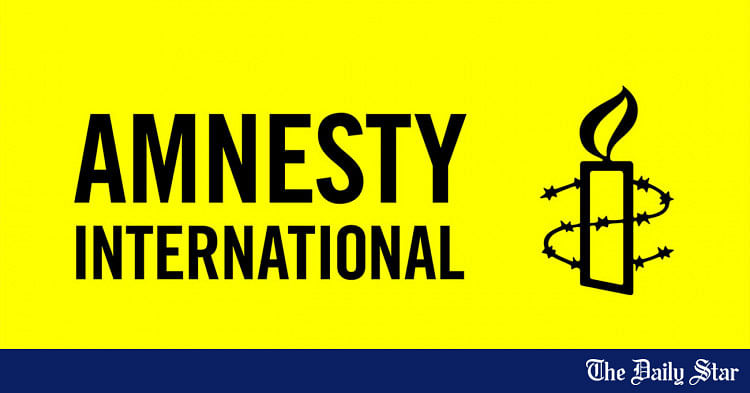
End crackdown on protesters, lift all curbs: Amnesty
Amnesty International today urged the Bangladesh government and its agencies to respect the right to protest, end violent crackdown on protesters and immediately lift all communication restrictions
End crackdown on protesters, lift all curbs: Amnesty

Amnesty International today urged the Bangladesh government and its agencies to respect the right to protest, end violent crackdown on protesters and immediately lift all communication restrictions.
"Authorities must immediately lift the shoot-on-sight orders, fully restore internet access across the country and end the use of army and paramilitary forces in the policing of protests," Deprose Muchena, said senior director at Amnesty International.
The rights group released the second part to its evidence analysis series on Bangladesh's quota-reform protest today.
The authorities must also guarantee that shoot-on-sight orders and internet shutdowns will not be used in the future to suppress protests, Muchena said.
He said these repressive measures are a deliberate attempt to crush both these protests and any future dissent.
The egregious human rights records of the Bangladesh government and the Rapid Action Battalion (Rab), which has been deployed alongside other forces to control protests, provides little reassurance that the protesters' rights will be protected in the absence of active international monitoring with internet and communication restrictions still partially in place, said Muchena.
Amnesty citing media reports said there have been at least 2,500 arrests and nearly 200 deaths and several thousand injuries since the protests turned deadly on July 16.
At least 61,000 people have been charged over the recent violence, said the rights group.
In its evidence analysis, Amnesty said Bangladesh authorities have continued to use unlawful force against protesters in six days of communication restrictions across the country.
The nationwide internet access was partially restored on July 23 after six days of complete shutdown of communication. It said this period was marked by crackdown on protesters, the deployment of army, curfew and the issuing of shoot-on-sight orders.
The limited information coming out of the country has been an impediment to human rights monitoring, it added.
Amnesty said, along with its Crisis Evidence Lab, it has verified videos of three incidents of "unlawful use of lethal and less lethal weapons" by law enforcement agencies while policing the protests.
The video and photographic evidence that are trickling out of Bangladesh provides a grim picture, Muchena said.
The rights group said a video clip circulating on social media since July 20 shows an officer firing an assault rifle during the protests.
The seven second video verified by Amnesty International was filmed in front of a bank on DIT Road in Rampura of Dhaka.
It shows several officers from the Bangladesh Police and Border Guard Bangladesh standing alongside an APC.
"One of the officers points a Chinese type 56-1 assault rifle towards off-screen targets and fires two rounds," Amnesty said.
Firearms are not an appropriate tool for the policing of assemblies; they must only be used when strictly necessary to confront an imminent threat of death or serious injury, it added.
Muchena said an independent and impartial investigation into all human rights violations committed by security forces must urgently be conducted and all those found responsible must be held fully accountable.
"Victims of unlawful police use of force, including those who have been injured and family members of those who have been killed, must also receive full reparations from the state," said Muchena.
Amnesty International today urged the Bangladesh government and its agencies to respect the right to protest, end violent crackdown on protesters and immediately lift all communication restrictions.
"Authorities must immediately lift the shoot-on-sight orders, fully restore internet access across the country and end the use of army and paramilitary forces in the policing of protests," Deprose Muchena, said senior director at Amnesty International.
The rights group released the second part to its evidence analysis series on Bangladesh's quota-reform protest today.
The authorities must also guarantee that shoot-on-sight orders and internet shutdowns will not be used in the future to suppress protests, Muchena said.
He said these repressive measures are a deliberate attempt to crush both these protests and any future dissent.
The egregious human rights records of the Bangladesh government and the Rapid Action Battalion (Rab), which has been deployed alongside other forces to control protests, provides little reassurance that the protesters' rights will be protected in the absence of active international monitoring with internet and communication restrictions still partially in place, said Muchena.
Amnesty citing media reports said there have been at least 2,500 arrests and nearly 200 deaths and several thousand injuries since the protests turned deadly on July 16.
At least 61,000 people have been charged over the recent violence, said the rights group.
In its evidence analysis, Amnesty said Bangladesh authorities have continued to use unlawful force against protesters in six days of communication restrictions across the country.
The nationwide internet access was partially restored on July 23 after six days of complete shutdown of communication. It said this period was marked by crackdown on protesters, the deployment of army, curfew and the issuing of shoot-on-sight orders.
The limited information coming out of the country has been an impediment to human rights monitoring, it added.
Amnesty said, along with its Crisis Evidence Lab, it has verified videos of three incidents of "unlawful use of lethal and less lethal weapons" by law enforcement agencies while policing the protests.
The video and photographic evidence that are trickling out of Bangladesh provides a grim picture, Muchena said.
The rights group said a video clip circulating on social media since July 20 shows an officer firing an assault rifle during the protests.
The seven second video verified by Amnesty International was filmed in front of a bank on DIT Road in Rampura of Dhaka.
It shows several officers from the Bangladesh Police and Border Guard Bangladesh standing alongside an APC.
"One of the officers points a Chinese type 56-1 assault rifle towards off-screen targets and fires two rounds," Amnesty said.
Firearms are not an appropriate tool for the policing of assemblies; they must only be used when strictly necessary to confront an imminent threat of death or serious injury, it added.
Muchena said an independent and impartial investigation into all human rights violations committed by security forces must urgently be conducted and all those found responsible must be held fully accountable.
"Victims of unlawful police use of force, including those who have been injured and family members of those who have been killed, must also receive full reparations from the state," said Muchena.

